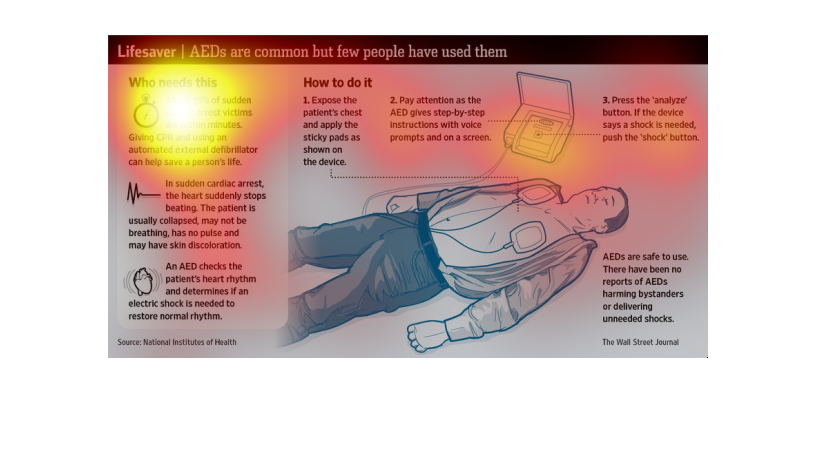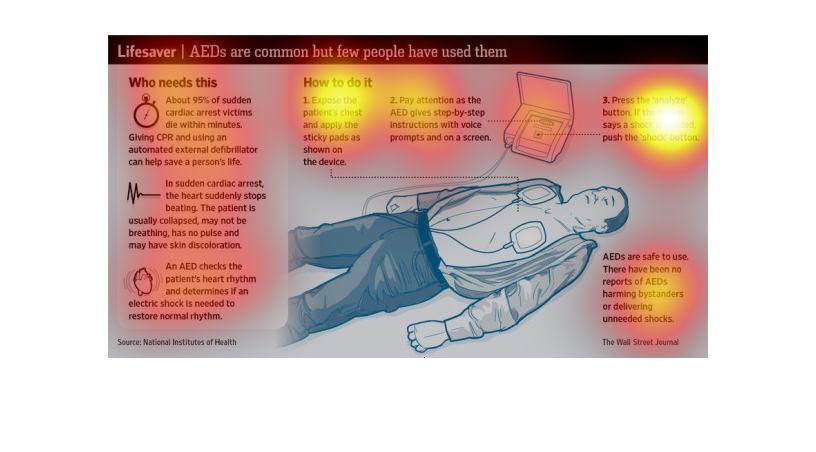
This chart is an informative chart about AEDs and their uses. It describes what they are and
what they do. Also, it give a step by step instruction of how to use the AEDs. It shows where
to attach the parts of the AED to the persons body. It also briefly covers cardiac arrest.


In this study conducted by the Wall Street Journal, from information obtained from the National
Institute of Health, AEDs are very common in various places but people don't know how to use
them. This graphic goes into detail on how to use them.


This chart shows how AEDs are common but few people have used them. It talks about situations
where people would need AEDs and details steps on how to use them.


This chart describes life saver . Specifically, AEDs are common but few people have used them.
The chart contains illustrations to enhance the information presented.


This chart from the Wall Street Journal shows how automatic electronic defibriliators are
common but most people do not know how to use them properly.


This describes when an AED should be used, and gives the step by step instructions for using
an AED. There is a brief clear list of the symptoms that would prompt someone to use an AED.
The instructions make it clear how simple and safe the machine is to use.


This chart illustrates how QEDs can be used in cases of cardiac arrest and CPR because they
can check the patient's heart rhythm and determine if an electric shock is needed.


AEDs are common but few people have actually used one. AN AED checks participant's heart
rhythm and determines if an electric shock is needed to restore actual rhythm. The chart
goes through the steps to use an AED.


This chart describes life saver. Specifically, AEDs are common, but few people have used them.
Categories on the chart include, who needs this, and how to do it.


This chart from the Wall Street Journal shows how automatic electronic defibrilators are common
and easy to use but never used by regular civilians.


In this study conducted by the Wall Street Journal- sourced from the National Institutes of
Health- AEDs are widely available to use, but unfortunately people do not know how to use
it .


Lifesaver AEDs are common but few people have used them. The images asks Who needs this?
And answers by suggesting about 95% of sudden cardiac arrest patients die within minutes.
Giving CPR and using an automated external defibrillator (AED) can save a person's life.
The picture to the right is of a man lying on his back with accompanying text that describes
How You Do It (ie, use an AED).


The following chart explains how AEDs are Common, but that very few people have the knowledge
to operate them. It shows the process of how to operate an AED.


This diagram shows a device called the aed life saver and gives instructions on how to use
it. It is used when someone goes into cardiac arrest and gives details on how to help save
the person.


This chart gives instructions on how to use an AED in case of heart attack. Expose the person's
chest, apply the AED as in the instructions, press the analyze button and press the shock
button if needed. There are no risks of accidental shock to bystanders.
































